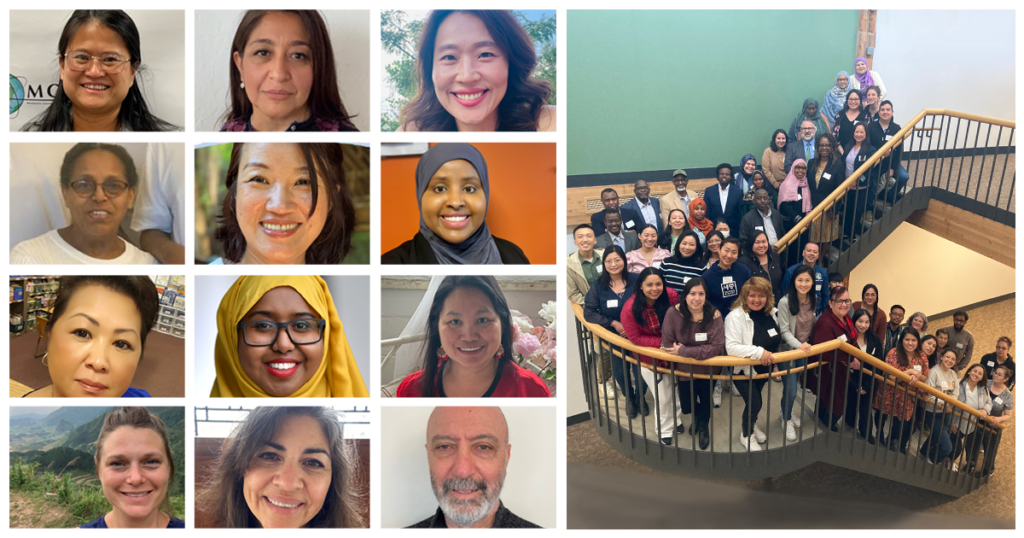EE championed a bill last year to clear a barrier to Heritage Language teachers who lacked a viable licensure option to stay in the classroom.
At risk: Heritage Language programs—highly valued by students, schools, and communities—but threatened by the restrictive and murky licensure rules for the teachers who lead them.
The bill established an innovative, experience- and mentorship-based pathway for Heritage Language teacher candidates—and dedicated support to candidates from the state’s teacher licensing board (PELSB).
- Popular demand: The inaugural 50-person cohort of educators seeking a license via the new pathway filled fast.
The popularity of the pathway comes as no surprise to us. EE’s work on this issue was spurred by educators in the community who were calling for a solution. Our current efforts remain grounded in that community.
Happening now: EE has worked in partnership with PELSB to design this new licensure pathway. We quickly saw a need for an advisory group of heritage and culture experts representing each of the languages of the inaugural cohort.
- We are proud to convene the new Minnesota Heritage Fellows, a talented group of local Heritage Language experts, to formally advise PELSB on the design of the new pathway program.
A sense of greater student belonging
Seventeen percent of Minnesota students speak a Heritage Language, their home language or that of their wider community other than English.
For these students, Heritage Language programs are shown to build positive identity and belonging, strengthen family-school ties, and boost academic achievement—all while making English easier to learn.
- Students who develop their Heritage Language in school are “a lot more confident in who they are. They navigate the system better,” MN Heritage Fellow Ana Arévalo told us.
Arévalo is a Minneapolis EL teacher who has spent many years teaching in language immersion programs. She emigrated to the U.S. from El Salvador at age 12, and knows the push and pull students feel when the dominant language is different from theirs at home.
“When you are disconnected, it creates a sense of a void,” Arévalo cautions about early generation immigrant students losing touch with their culture and language. “How do I fit into this bigger puzzle? It extends to your community, to your humanity.”
- Heritage Language programs help students build stronger connections to their cultural and family roots. As do their Heritage Language teachers, specifically.
Arévalo saw how her Heritage Language speaking students valued a role model who looked like and could speak like them.
“They would come and talk to me and say, ‘Now we can breathe.’”
A key to deeper student learning
Antoine Mefleh, another MN Heritage Fellow, is a recently retired Minneapolis teacher who taught his native language of Arabic as a World Language. Unlike Heritage Language programs, World Language courses are mostly composed of non-native speakers.
“You spend several years scratching the surface with a World Language,” said Mefleh. Heritage Language courses have an opportunity to go deeper. “With the foundations out of the way, you can look at original text, literature. Go more into the culture, the philosophy.”
Mefleh witnessed firsthand what research tells us: When students have the chance to develop their Heritage Language further, their English improves too.
Said Mefleh, “You will be a better learner of other languages because you know how language functions.” And, he and the research agree, a better learner of non-language subjects.
“Students were not getting what they needed from math and science and social studies, so we assigned Somali teachers to teach other subjects in Somali,” Mefleh shared about a successful school strategy for student mastery.
“The students can translate their knowledge into English once they learn it.”
A roadmap for work still ahead
The budding pathway program is a model for communities and policymakers concerned with other teacher licensure areas.
Teachers whose licensure status is at risk of bureaucratic limbo, teachers from shortage areas, and teachers of color need solutions that work and honor the wisdom these educators bring to bear. Students need them too.
